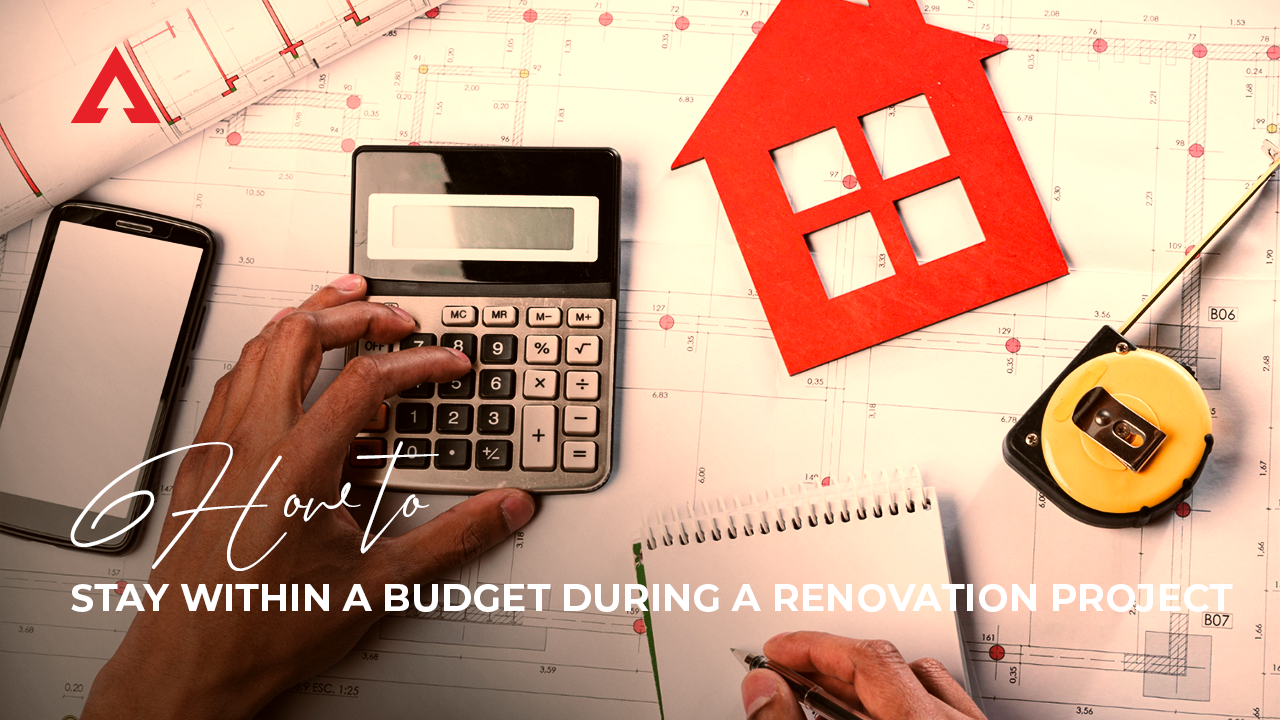Tue, Jun 17, 2025
Read in 5 minutes
Trying to stay within your renovation budget? Here’s a practical, human-friendly guide filled with real-world home renovation budget tips to avoid overspending and manage unexpected renovation costs.

Planning a renovation is exciting, but keeping costs under control is? That’s the tricky part.
Whether you’re remodeling your kitchen, updating your bathroom, or renovating an entire house, there’s one thing most people struggle with: staying within budget.
Renovations can spiral quickly. You start with one number, and before you know it, you’re 20% over and cutting corners just to finish. If this sounds familiar, don’t worry. You’re not alone.
This guide is here to walk you through how to stay within your renovation budget without sacrificing quality—or your sanity. These tips are simple, tested, and written for real homeowners, not just industry pros.
Key takeaways
Let’s begin with this: you need to know what you can actually spend, not what you wish you could afford.
Set your renovation budget based on:
Then take that number and subtract 15–20% for emergencies. That becomes your actual working budget.
Because unexpected renovation costs are almost guaranteed,hidden plumbing issues, structural surprises, or material delays. A buffer ensures you’re prepared.
One of the easiest ways to stay within your renovation budget? Draw a line between what’s essential and what’s optional.
Ask yourself:
Make two lists: must-haves and nice-to-haves. Spend on essentials first. If there’s room left, you can treat yourself.
Never settle for the first estimate. Get at least 3 detailed quotes from contractors and suppliers.
Look out for:
A common renovation budgeting mistake is not comparing properly. The lowest quote isn’t always the best—transparency and reliability matter more.
The phrase “while we’re at it” has busted more budgets than anything else.
It starts small: you’re redoing the kitchen and decide to upgrade the adjacent laundry room. Then maybe add recessed lighting. And update the trim…
This is how you go over budget fast.
Stick to the plan. Every time you consider adding work mid-project, ask:
If it’s not urgent or essential, save it for the next phase.
Keyword used: avoid overspending on renovations
You don’t need to be an accountant, but you do need to know where your money is going.
Use a simple spreadsheet, an app like Notion, or even pen and paper to track:
Being hands-on with your spending helps you make informed decisions quickly if costs start to shift.
Permits, fees, and taxes are the silent killers of good budgeting.
Depending on where you live (especially in British Columbia or major cities in Canada), permits can cost anywhere from a few hundred to several thousand dollars.
Always include:
Ignoring these could blow your budget even before demo starts.
Not all upgrades need to be expensive to look good.
Here’s where affordable home renovation ideas shine:
You can still get a high-end look on a smart budget—if you’re flexible and informed.
Before you rip everything out, ask: can this be reused, refinished, or repurposed?
This kind of thinking protects your budget and is more sustainable too.
Not all contractors are created equal. Choose someone who:
Check reviews, talk to past clients, and don’t be afraid to ask tough questions.
A contractor who works with your numbers—not around them—is worth every dollar.
If something feels off, ask. Don’t wait.
Whether it’s an unapproved charge, a change order, or a missed delivery, staying informed helps prevent small issues from turning into budget-breakers.
Set regular check-ins with your contractor or renovation manager. Weekly updates are ideal.
Let’s face it—renovations aren’t cheap, and costs add up fast. But with proper planning, clear goals, and smart spending, you can stay within your renovation budget and still love the results.
The key is knowing your limits, tracking everything, and having the discipline to say “no” when things start creeping outside your plan. Renovating a home is part creativity, part patience, and part budgeting. With all three, your dream space can become a reality without financial regret.